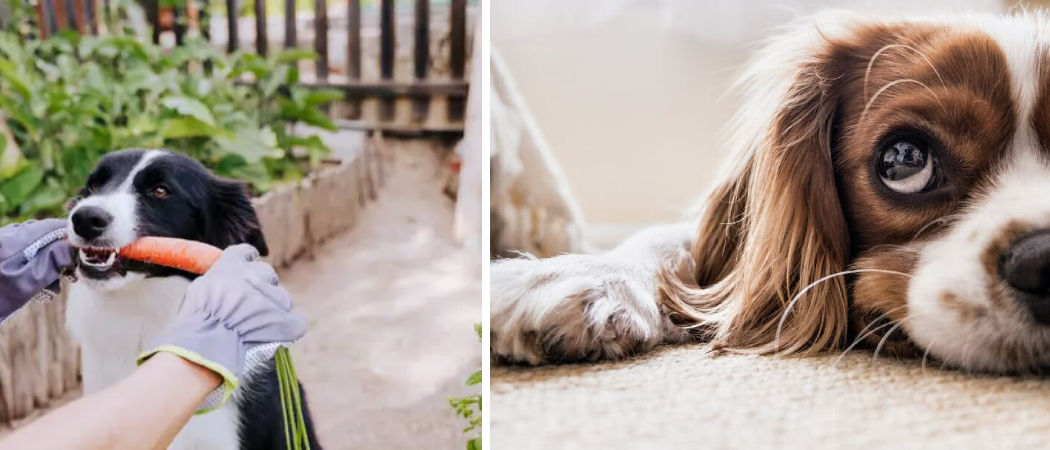After a dog enema, you can expect your dog to experience relief from constipation or impacted feces, improved bowel movements, and a decrease in discomfort. The enema helps to stimulate the colon and remove any blockages, allowing your dog to pass stool more easily.

It is important to closely monitor your dog in the hours following the enema for any signs of diarrhea or dehydration, and to provide a balanced diet and plenty of water to support their digestive health. Regular check-ups with your veterinarian may be necessary to address any underlying issues causing the constipation.

Credit: www.healthline.com
Immediate Effects
After a dog enema, immediate effects can include improved bowel movements, relief from constipation, and reduced discomfort for the dog. It is important to monitor the dog closely for any signs of lingering issues or complications.
Relief Of Discomfort
After a dog undergoes an enema, one of the immediate effects that can be expected is relief of discomfort. A dog that has been suffering from constipation or impacted feces may experience discomfort, bloating, and general uneasiness. However, when a veterinarian performs an enema, it helps to relieve these symptoms by effectively removing the blockage in the colon.
The enema procedure involves the introduction of liquid into the rectum, which softens and lubricates the feces, making it easier to expel. This helps to alleviate any discomfort or pain associated with constipation or obstruction.
Once the enema is administered and the blockage is cleared, a dog will likely feel relieved and more comfortable. They may exhibit a decrease in restlessness, pacing, or signs of discomfort.
Potential Side Effects
While enemas can provide relief for dogs experiencing constipation or impacted feces, there are potential side effects that pet owners should be aware of.
1. Irritation or inflammation: Some dogs may experience increased sensitivity or irritation in the rectal area after an enema. This can lead to redness, swelling, or temporary discomfort. However, these symptoms usually subside within a day or two, as the inflammation resolves.
2. Temporary changes in bowel movements: After an enema, a dog’s bowel movements may be slightly altered. This can include loose stools or increased frequency of bowel movements. These changes are usually temporary and should normalize within a few days.
3. Dependence on enemas: In some cases, dogs may become dependent on enemas to have a bowel movement. This can happen if the underlying cause of constipation, such as dietary issues or underlying health conditions, is not addressed. It is important to work with a veterinarian to determine and address the cause of your dog’s constipation to prevent long-term dependence on enemas.
Summary
After a dog undergoes an enema, immediate effects include relief of discomfort and a general feeling of relief. However, it is essential to be aware of potential side effects such as irritation, temporary changes in bowel movements, and the risk of dependency on enemas if the underlying cause of constipation is not addressed.

Credit: www.amazon.com
Long-term Effects
After a dog enema, it is important to be aware of the long-term effects. These can include temporary discomfort, changes in bowel movements, and occasional leakage. Understanding what to expect after a dog enema helps ensure a smooth recovery process.
After a successful dog enema procedure, your furry friend may experience several long-term effects that contribute to their overall comfort and well-being. From improved bowel movements to preventing future complications, it is essential to understand what can be expected in the aftermath of this procedure. In this article, we will delve into the long-term effects of a dog enema, focusing on improved bowel movements and preventing future complications.
Improved Bowel Movements
One of the primary long-term effects of a dog enema is the improvement in bowel movements. Prior to the enema, dogs may experience constipation or difficulty passing stool due to a buildup of fecal matter or impacted anal glands. However, after the enema, the removal of these obstructions clears the way for natural and smooth bowel movements.
As a result of the enema, dogs may experience:
- Easier and more frequent bowel movements
- Reduction in straining or discomfort during defecation
- Relief from constipation or diarrhea
By enhancing bowel movements, a dog enema can significantly improve your furry friend’s overall gastrointestinal health and provide relief from any discomfort they may have been experiencing.
Preventing Future Complications
In addition to improving bowel movements, a dog enema can also help prevent future complications. By removing blockages and obstructions in the anal area, the enema promotes better anal gland function and reduces the risk of infections or abscesses.
The removal of excessive fecal matter or foreign objects from the rectum and colon can also prevent further complications such as:
- Rectal prolapse
- Intestinal obstruction
- Impacted anal glands
- Formation of anal fistulas
Preventing these potential issues is crucial for maintaining your dog’s overall health and well-being. Regular dog enema treatments can help ensure that your furry companion remains free from any complications related to their anal and gastrointestinal health.
In conclusion, a dog enema can have significant long-term effects on your furry friend. From improving bowel movements to preventing future complications, this procedure plays a crucial role in maintaining your dog’s anal and gastrointestinal health. By promoting regular and comfortable bowel movements and minimizing the risk of complications, a dog enema contributes to your dog’s overall well-being and quality of life.
Post-enema Care
After a dog enema, it is important to provide post-enema care. This includes monitoring for any discomfort or complications, ensuring proper hydration, and gradually reintroducing food to the dog’s diet.
What to Expect After a Dog Enema: Post-Enema Care After a dog enema, proper post-enema care is essential to ensure your furry friend’s comfort and well-being. This care primarily involves focusing on hydration and diet, exercise and activity, and monitoring for signs of discomfort. By adhering to these guidelines, you can help your dog recover smoothly and minimize any potential complications.
Hydration And Diet
- Ensure your dog has access to fresh, clean water at all times. Proper hydration is crucial for their overall health and recovery. Monitor their water intake and encourage them to drink regularly.
- Consider providing your dog with small, frequent meals rather than a large meal all at once. This can help prevent digestive issues and promote easier digestion.
- Stick to a bland diet for the first few days after the enema, consisting of easily digestible foods such as boiled chicken or white rice. Introduce regular food gradually, observing how your dog reacts.
- Consult your vet regarding any specific dietary recommendations for your dog’s post-enema care, as individual needs may vary.
Exercise And Activity
While it’s important to allow your dog to rest and recover after a enema, gentle exercise and activity can also be beneficial for their overall well-being. Here are some considerations:
- Avoid strenuous physical activities or high-intensity exercise immediately after the enema.
- Leash-walks can be an ideal form of exercise during the recovery period, as they provide controlled movements and minimize the risk of any post-enema discomfort.
- Gradually increase the duration and intensity of exercise as your dog begins to regain their energy and strength.
- Always monitor your dog during exercise and be mindful of any signs of discomfort or exhaustion.
Monitoring For Signs Of Discomfort
It is crucial to closely monitor your dog’s post-enema condition for any signs of discomfort or complications. Here are some key aspects to observe:
- Watch for any signs of abdominal pain, such as restlessness, whining, or excessive panting. These could indicate an underlying issue that requires further veterinary attention.
- Check the stools for any signs of blood, abnormal color, or consistency, as these could indicate complications or ongoing digestive issues.
- Observe your dog’s overall behavior and energy levels. While some dogs may bounce back quickly, others may require more time to recover.
- Seek immediate veterinary care if you notice any severe or persistent symptoms, such as vomiting, diarrhea, or prolonged lethargy.
By closely adhering to these post-enema care guidelines and keeping a vigilant eye on your beloved canine companion, you can ensure a swift and smooth recovery. However, if you have any concerns or questions, do not hesitate to consult your veterinarian for further guidance.

Credit: vhc.missouri.edu
Frequently Asked Questions Of What To Expect After A Dog Enema
What Is A Dog Enema?
A dog enema is a medical procedure in which liquid is inserted into the rectum to help remove stool or treat certain medical conditions in dogs.
Why Would A Dog Need An Enema?
A dog may need an enema if they are experiencing constipation, impacted stool, or are unable to pass stool on their own. It can also be used to administer medication or to clean the colon before certain medical procedures.
How Long Does It Take For A Dog Enema To Work?
The effects of a dog enema can vary, but most often, you can expect to see results within a few hours to a day. If you haven’t seen any improvement within 24 hours, it’s important to contact your veterinarian for further guidance.
How Should I Prepare My Dog For An Enema?
Preparing your dog for an enema may involve fasting them beforehand and ensuring they have access to plenty of water. It’s important to follow your veterinarian’s instructions and ask any specific questions or concerns you may have.
Conclusion
To sum up, understanding what to expect after a dog enema is crucial for pet owners. It’s important to anticipate potential side effects such as temporary discomfort, bowel movements, and changes in appetite. Keeping a close eye on your furry friend’s behavior, providing necessary post-enema care, and consulting with a veterinarian when needed are key to ensuring their well-being.
By arming yourself with knowledge, you can confidently navigate your dog’s recovery process and ensure a healthy and happy outcome.


